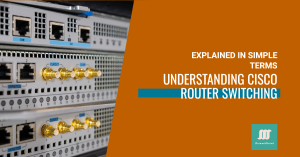Router Switching Mastery: Unlock Efficient Packet Delivery (Updated 2025)
The router is a device that receives a packet from the source on any interface and forwards it to its destination on another interface. This is possible with the router switching function, which encapsulates packets in the data link frame type for the outgoing data link. Before going further, learn the key networking terms for […]

